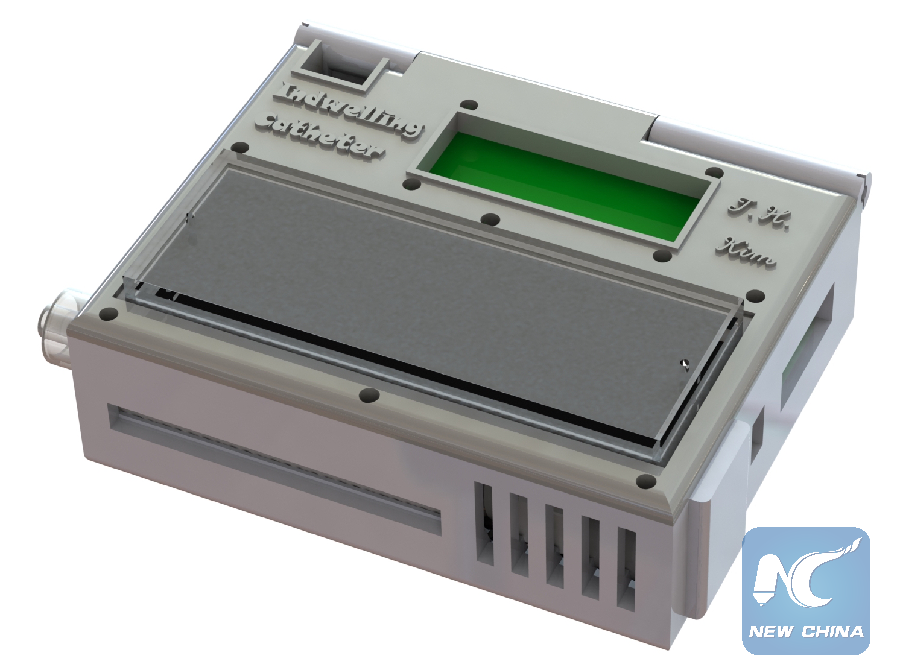
The wearable device measures roughly 2 x 2.75 x 1 inches, with the cancer-cell-capturing chip mounted on top. The catheter connecting to the patient runs through the hole in the top left corner. (Credit: Tae Hyun Kim)
WASHINGTON, April 1 (Xinhua) -- American researchers have developed a wearable device that can collect live cancer cells directly from blood in animals, according to a study published on Monday.
The study published in the journal Nature Communications reported the prototype that can help doctors diagnose and treat cancer more effectively in the future.
"Nobody wants to have a biopsy. If we could get enough cancer cells from the blood, we could use them to learn about the tumor biology and direct care for the patients," said the paper's senior author Daniel Hayes, a professor of breast cancer research at the University of Michigan.
Although tumors can release over 1,000 cancer cells into the bloodstream in a single minute, the current methods of blood draws often fails to capture them, even in patients with advanced cancer.
The new device could continuously capture cancer cells directly from the vein over several hours, screening much larger volumes of blood, according to the study.
In animal tests, the cell-grabbing chip in the wearable device trapped 3.5 times as many cancer cells per milliliter of blood as it did running samples collected by blood draw.
The device is so small that it could be worn on the wrist and connected to a vein in the arm. The device manages to integrate all the components into a single device and then ensure that the blood would not clot and the cells would not clog up the chip, and that the entire device is completely sterile, according to the study.
Also, the device uses the nanomaterial graphene oxide to create dense forests of antibody-tipped molecular chains, enabling it to trap more than 80 percent of the cancer cells in whole blood that flow across it.
Researchers estimated that the device could begin human trials in three to five years. It would be used to help to optimize treatments for human cancers by enabling doctors to see if the cancer cells are making the molecules that serve as targets for many newer cancer drugs.

